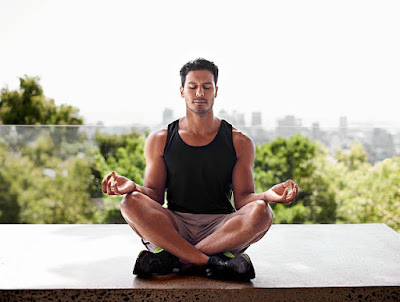The development of the higher or inner phases of Yoga consciousness should go hand in hand with the physical practices of Yoga, so that all of the practices and processes of Yoga, which are limiting within themselves, become an integrated activity uniting body, emotions, and mind with the Higher Nature.
Yoga encompasses a wide range of topics.
- Yoga appeals to the logical mind because it gives full play to reason in its aphorisms and directions, with reasonable explanations for theory and practice.
- It is scientific because it takes a balanced approach to man's requirements and teaches practical applications of focus and meditation in daily life.
- Yoga permits pleasant emotions to flourish while suppressing those that are distracting, disruptive, and harmful in human nature.
- Friendship, compassion, empathy, unitive sentiments, and love are all attributes associated with Yoga's higher path.
The practical component of Yoga is concerned with Kriyas or Pratcriyas, which are practices and procedures that deal with the "man within," the conscious mind, governing and regulating the body, emotions, and lower mind.
Yoga is sometimes referred to as "mind over matter" because of its control.
To achieve "four-fold awareness," the conscious mind must be employed.
- The Hatha Yoga Asanas, Kriyas, and Mudras, as well as the Pranayamas with proper Bandhas and Kumbhakas, demonstrate the initial level of this "four-fold awareness."
These activities help people become more conscious of their bodies, their functions, and their roles in personal development.
The result is vigorous well health as a side effect.
The Bahiranga, or outside limbs of Yoga practice, are represented by the four phases of Yama, Niyama, Asana, and Pranayama.
These outer limbs serve as a solid basis for the higher practices, such as Antaranga or Samyarna.
- Otherwise, one's existence is founded on the changing sands of bad health, emotional and mental uncertainty, which are so frequently the spiritual aspirant's demise.
Each one develops a distinct kind of spiritual awareness. Some people refer to these stages as "above the brow" yoga exercises, and they prefer to focus only on them, believing that they constitute the core of Raja Yoga.
"On the authority of our Spiritual forefathers and Ancestors, I declare that there can be no Raja Yoga without Hatha Yoga."
In this scenario, Raja Yoga refers to the upper Antaranga, whereas Hatha Yoga refers to the Bahiranga's basis.
- Sensory control, which culminates in the withdrawal of the senses from the object of their attachment, is known as pratyahara.
- Sense withdrawal creates a unique understanding of the senses and how they utilize the body, as well as the emotions and how they feed off of that same body's sensate experience.
In fact, most people become aware of how their senses have "misused" their bodies.
- Kriyas in many forms gradually pull the senses away from the world to which they are naturally drawn.
- By nonviolently restraining the senses, the Yogi may direct his mental focus to the Antarakarana, the inner faculty of mind activity, and acquire Dharana, or concentration.
- This level is about being aware of how the mind can govern emotions and perceptions while also transcending into a higher mental state.
"Yoga Chitta Vritti Nirodha: Yoga starts with the limitation of the subconscious mind's activity," Patanjali correctly said.
Until one becomes aware of the lower mind's disloyal activities, he is subject to its whims and irrational behavior.
- What seems to be a method of "pulling oneself up by one's own boot straps" is instead an instance of "mind elevating mind."
"The Self is employed to raise the self," Sri Krishna says in the Srimad Bhagavad Gita.
- Dhyana, or meditation, is the practice of achieving free-flow concentration.
- Meditation is not the same as "thinking," as many people believe.
Cosmic Consciousness or Universal Awareness is what Samadhi is.
It, like other parts of existence, has various features and phases, ranging from the sudden and brief to the natural and limitless.
- Sabikalpa Samadhi refers to the early stages, whereas Nirbikalpa Satnadhi refers to the latter or deeper stages.
Thus a Jivan Mukhta, a free-soul, or a realized one, is the being experiencing this condition.
You may also want to read more about Gnani Yoga here.
You may also want to read more about Kundalini Yoga here.
You may also want to read more about Yoga here.
You may also want to read more about Yoga Asanas and Exercises here.
You may also want to read more about Hinduism here.
Be sure to check out my writings on religion here.



